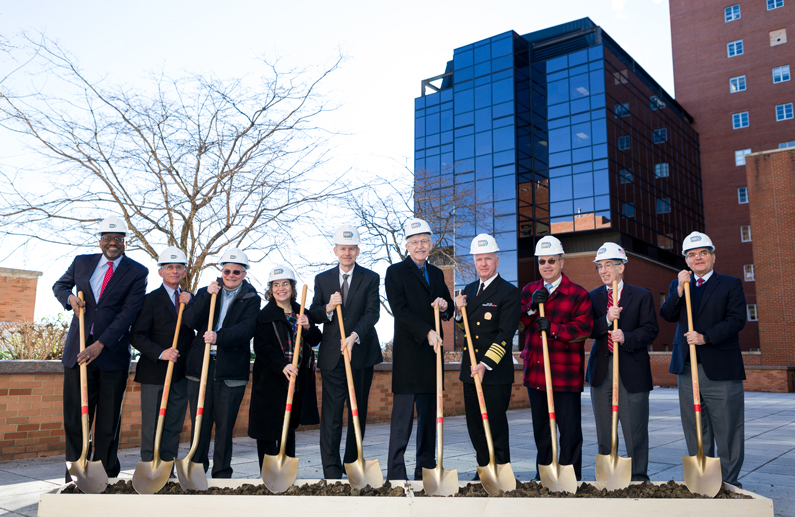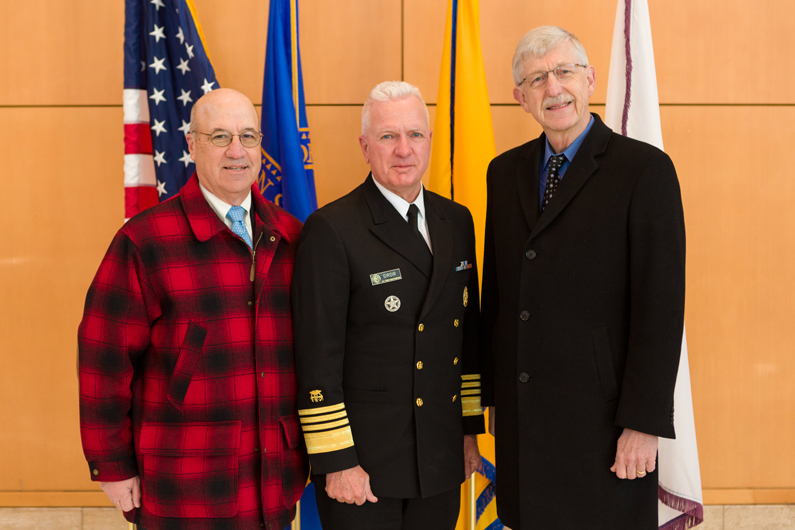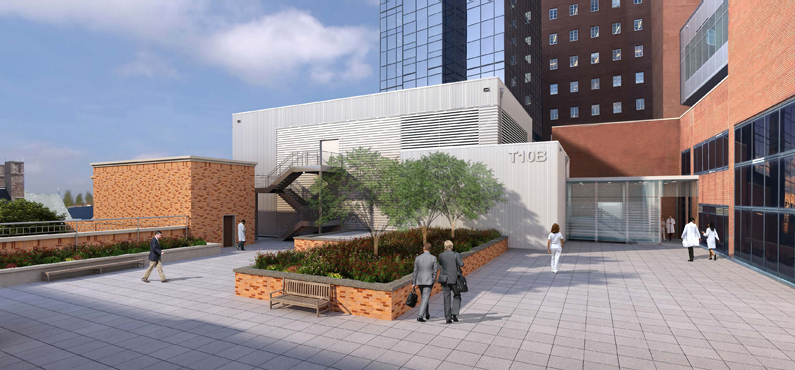Center for Cellular Engineering expands to Southeast Patio

In January, the NIH Clinical Center celebrated the groundbreaking of a new cellular processing facility on the Southeast patio of Building 10 and establishment of the Clinical Center's Center for Cellular Engineering (CCE). The facility marks the most recent expansion for the Department of Transfusion Medicine's growing capacity to support intramural cellular therapy protocols.
Dr. Francis Collins, director of NIH, Dr. Jim Gilman, CEO of the NIH Clinical Center, and ADM Brett Giroir, Assistant Secretary for Health at the U.S. Department of Health and Human Services spoke at the ribbon cutting ceremony about the great public health benefit the CCE will provide. From the development of chimeric antigen receptor (CAR) T-Cells used to fight cancer to bringing regenerative stem cell therapy for eye disease closer to the clinic – excitement filled the Southeast patio during the event.
"This Center allows us to provide safe, innovative therapies and assess their effectiveness in Clinical Center patients," said Dr. Harvey Klein, chief of the Department of Transfusion Medicine. "This increased growth and sophistication of cellular engineering is not just for the patients that come here – it's to improve health for the American public."

In the Clinical Center, cellular processing capabilities serve intramural researchers from nearly all of the institutes that conduct clinical research in Building 10. Thirty-four clinical trial protocols, such as those that involve complex cell and gene therapy and complex hematopoietic stem cell transplants, rely on the CCE and by 2020, 12 more protocols are expected to be up and running.
In 2000, the Department of Transfusion Medicine Special Services Laboratory had only one small room, and a handful of personnel with specialized cellular engineering capabilities to identify and alter cells for patients suffering from malignant or genetic diseases. Now, in 2018, the Cell Processing Section staffs 11 active rooms for cellular engineering as well as laboratories to develop and characterize novel cellular products. With the increased demand and desire of intramural researchers to investigate cellular therapies, the CCE anticipates providing 15 active rooms by the end of 2019 and 22 active rooms by 2021.
Attendee, Dr. Jennifer A. Kanakry, a research physician with the National Cancer Institute, told CC News, "[The Center for Cellular Engineering] is critical to allow us to provide a potentially life-saving, curative therapy to our patients as quickly as possible."
RADM Dr. Richard Childs, Clinical Director of the National Heart, Lung, and Blood Institute's Division of Intramural Research, joined the celebration as well. "The advanced cellular engineering capabilities of the NIH Clinical Center Transfusion Medicine Department are today saving the lives of patients who would have had no chance for survival less than a decade ago," he said to CC News.
